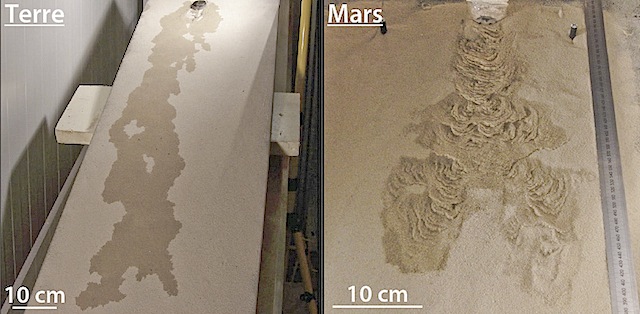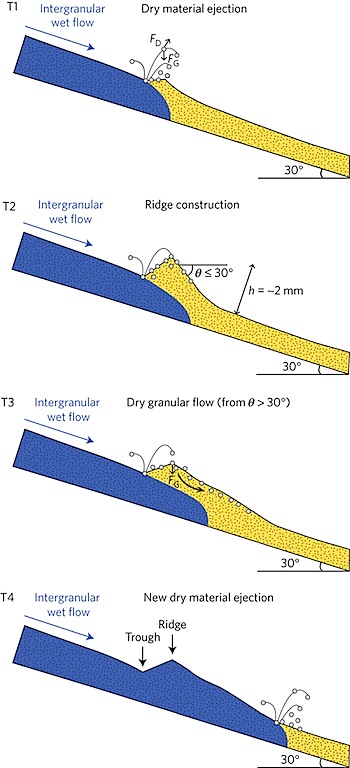
 At present, liquid water on Mars only exists in small quantities as a boiling liquid, and only during the warmest time of day in summer. Its role has therefore been considered insignificant until now.
At present, liquid water on Mars only exists in small quantities as a boiling liquid, and only during the warmest time of day in summer. Its role has therefore been considered insignificant until now.
However, an international team including scientists from the CNRS, Université de Nantes and Université Paris-Sud and headed by Marion Massé, from the Laboratoire de Planétologie et Géodynamique de Nantes (CNRS/Université de Nantes) has now shown that even though water that emerges onto the surface of Mars immediately begins to boil, it creates an unstable, turbulent flow that can eject sediment and cause dry avalanches. The flow of small amounts of a boiling liquid therefore significantly alters the surface.
The discovery of this exotic process, unknown on our planet, radically changes our interpretation of the Martian surface, making it difficult to undertake a direct comparison of flows on the Earth and on Mars. These findings are published on 2 May 2016 in the journal Nature Geoscience.
It is well known that water boils at 100 °C. But this is only true at sea level, since boiling point depends on atmospheric pressure: the higher the altitude, the thinner the atmosphere, and the lower the boiling point. For instance, at the top of Mount Everest, water boils at 60 °C. But on Mars, where the atmosphere is much thinner than on Earth, it can boil at temperatures as low as 0 °C. During the Martian summer, when the subsurface water ice begins to melt and emerge at the surface, where the mean temperature reaches 20 °C, it immediately starts to boil. This is also the case for the flows of saline water discovered last year. So could an evaporating liquid alter the Martian landscape? [More at links]








